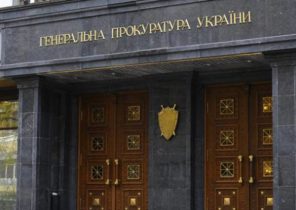Those who liked the movie “Mistress” is to get acquainted with a new creature it writer Tony McNamara (Tony McNamara). The creators mini-series called “the Great” (“The Great”), which was released on 15 may on the website Hulu, chose exactly the same disrespectful and sarcastic approach to telling the story of Catherine the great (her role is played by Elle fanning (Elle Fanning)), Russian Empress of the 18th century, which organized a coup and overthrew her husband Peter III. In the new series, which its creators openly called “the occasional true story”, shown filled with the UPS and downs of the process of turning this woman of the gentle young wife in the sovereign ruler.
Although the conscious anachronicity and stylizowane this series in a sense amusing, you will get much more pleasure from viewing it, if you know highlights the real story of Catherine. So, before you immerse yourself in its view, pay attention to seven facts concerning the real life of Catherine the great to get in the swing of things.
1. Her real name is not Catherine
Although today all over the world know her as Catherine the Great, at birth she was given the name of Sophia Augusta Frederica of Anhalt-Zerbst. She was born in 1729 in a noble but impoverished family, which still retains a connection with the Supreme light. That is thanks to contacts her family she was in Russia, where she began her new life.
2. Catherine the Great was the reigning female leader in the history of Russia
This fact is even more surprising when you consider that in fact Catherine was not Russian she was born in the Kingdom of Prussia, and when she was 15 she received an invitation from the then Empress Elizabeth Petrovna. Elizabeth was looking for a wife to his nephew Peter, whom she chose as the heir to the throne and the ambitious mother Catherine for a long time, prepped her for a good marriage.
At the age of 16 years, Catherine has managed to captivate both Empress Catherine and the entire Russian people, all but Peter. According to numerous testimonies, Catherine and Peter at the first meeting did not like each other, but in August 1745, they were married. Peter III ascended the Russian throne after almost two decades, in 1962.
3. The marriage between Catherine and Peter had a bad start…
And over time, their relationship completely deteriorated. As teenagers, Katherine and Peter never with each other don’t get along, it is not surprising that their marriage wasn’t extremely successful. First, for eight years they had no children, which at the time was considered extremely strange and unusual. Some historians suggest that Peter was either infertile or was unable to consummate the marriage.
And Catherine, and Peter has a lover. A favorite of Catherine was the Russian army officer Sergei Saltykov. When in 1754 Catherine gave birth to a son Paul, it was rumored that his father was just Saltykov. Later, similar rumors circulated about her other three children.
4. Catherine converted to Orthodoxy as a teenager
Although Catherine was brought up Lutheran, she converted to Orthodoxy. Her enthusiasm and willingness to accept Orthodoxy became one of the most important factors that allowed it to win the love of the Russian people and of the Empress Elizabeth.
5. She came to power, overthrowing his wife
Though the creators of the series “Great” has allowed itself a lot of historical liberties, this episode of Catherine’s life, they have shown with absolute accuracy. After the accession of Peter to the throne, he took some very unpopular measures, including concluded the long war between Russia and Prussia. Because people treat Peter worse, Catherine doubted the ability of his wife to rule the country. Therefore, when unhappy with the situation, a group of nobles conspired to overthrow Peter, Catherine joined them. This group was headed by Catherine’s lover Grigory Orlov. In a Palace coup, Peter was dethroned and taken into custody.
The reign of Peter lasted only six months before he abdicated. At this point, Catherine became the absolute ruler of Russia.
6. There is no evidence linking Catherine to the murder of her husband
Yeah, after Peter denied the throne, a coup d’etat has acquired a much more sinister hue. A week later, on 17 July 1762, Peter died, and though the circumstances of his death remained a mystery, many believe that he was killed by Alexei Orlov, the brother of Gregory. There is no conclusive evidence that Catherine knew about the impending murder of her husband, or that she was the one who ordered to kill him, but, according to popular belief, she was involved in the incident.
It is not surprising that during his long reign as Empress Catherine is also faced with multiple rebellions. One of the most significant uprisings occurred in 1773, when a group led by former military officer Pugachev openly declared that Catherine illegally occupies the throne, — Pugachev said that actually he was Peter III. Despite the absurdity of his statement, Pugachev managed to gather around him thousands of supporters and to raise very large-scale rebellion against Catherine. But in the end he was captured, and in 1775 he was executed.
7. The older Catherine’s son Paul was also killed
Like father, like son. Paul’s relationship with his mother was very difficult: his education focused on Elizabeth, and his mother seldom found time to spend with him. After the accession of Catherine to the throne, their relationship became even more strained and Paul were suspicions that his mother is planning his murder. Of course, it wasn’t as though Catherine had good reason to doubt his ability to inherit the throne and rule the country.
When Paul’s own children were born, Catherine was engaged in their education (just like Elizabeth did the education of Paul). Then there were rumors that she had intended to name his heir, not Paul, and one of his sons. However, she died before able to realize their plans in life, and in 1796 to the Russian throne Paul, who quickly undid many of its achievements. Five years after the accession to the throne Paul was killed.







